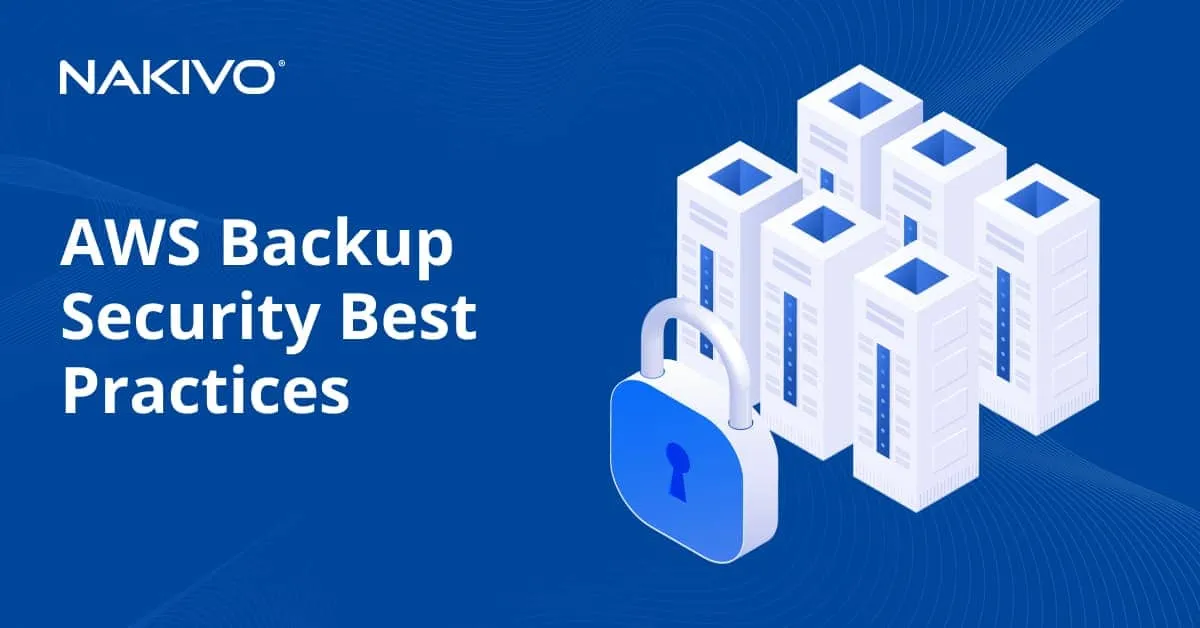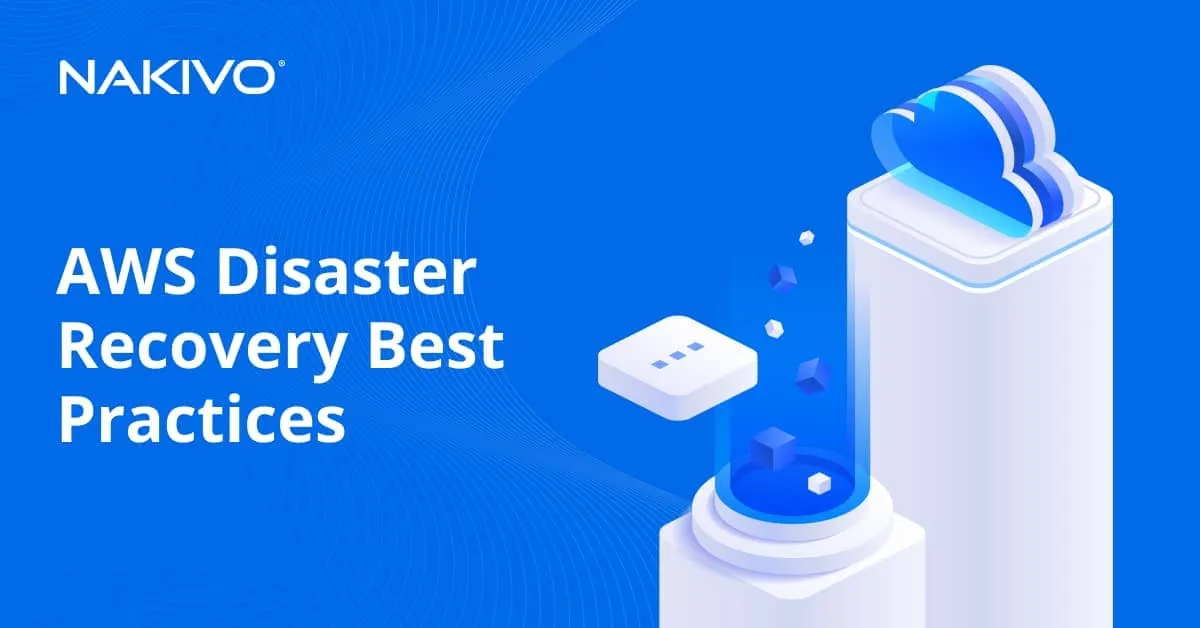Cloud Storage Security Best Practices
Cloud storage has brought numerous benefits for organizations, including easy accessibility, scalability and cost efficiency. Public cloud providers continue to develop the technology and add new functionality to improve efficiency and security. However, there are security concerns that you should be aware of and be equipped to resolve potential security issues in the cloud. Let’s go over all potential risks and data protection practices to prevent data loss in the cloud.
What Is Cloud Storage Security?
Cloud storage security refers to the technologies and measures used to protect data stored in cloud-based storage systems from data breaches, data loss, and a range of other security threats. These security measures are implemented partly by the vendor and partly by the organizations that own the data to ensure confidentiality, integrity, and availability.
The specific security measures taken will vary depending on the type of data, the cloud deployment model (public, private, hybrid), and the organization’s security policies.
Let’s first look at the cloud storage types:
- Public cloud. Cloud resources are owned and operated by third-party providers, shared among multiple users and accessed over the internet. Examples include Amazon Web Services (AWS), Microsoft Azure and Google Cloud.
- Private cloud. Cloud resources are dedicated to a single organization and can be hosted on-premises or by a third party. They offer more control and customization options but require a higher initial investment.
- Hybrid cloud. Combines the elements of both public and private clouds, allowing data and applications to be shared between the two. The public and private cloud environments are typically integrated and orchestrated to work seamlessly together. This setup offers more control and flexibility over how IT resources are used and over security.
Cloud Storage Security Concerns
Some security threats are common to both private and public clouds as a result of the underlying technology and the nature of cloud computing, with both delivering resources over a network. However, some differences exist between the two deployment models, which give rise to unique security considerations.
Shared security concerns
Cloud security issues lead to severe repercussions on business reputation and bottom line as a consequence of:
- Data breaches involve unauthorized individuals gaining access to systems, in particular to sensitive, confidential or private information. Data breaches can lead to serious legal issues and financial loss.
- Data loss resulting from technical failures, human error, or other unforeseen events is a risk with both models. Data loss can have serious consequences if an organization does not have a backup and recovery plan in place.
- Compliance and regulatory Issues. Regulatory compliance challenges can exist in both private and public clouds, especially when handling sensitive data subject to industry-specific or regional regulations. Many countries have data protection, data localization and data sovereignty laws. One of the examples is GDPR.
The main security threats that lead to these consequences are:
- Data encryption. Unencrypted data makes it easier for attackers to access this data and corrupt or steal this data. Encryption is essential for protecting data at rest and in transit in both private and public clouds.
- Access control. Proper access control mechanisms are critical to prevent unauthorized access to data and resources in both deployment models. Poor identity and access management (IAM) in cloud storage leads to data breaches, unauthorized access, insider threats, compromised credentials, lack of auditing, compliance violations and over privileged users, increasing security risks and compromising data integrity.
- System vulnerabilities refer to the potential for security weaknesses or flaws in the underlying hardware, software, or infrastructure of cloud storage systems. They can be exploited by malicious actors to gain unauthorized access, compromise data integrity, and disrupt cloud services.
- Misconfigured cloud involves resources, services, or security settings that are not properly configured. This allows attackers to exploit these weaknesses to gain unauthorized access, compromise data integrity and disrupt services. Hackers pose a significant concern for cloud storage due to their ability to exploit vulnerabilities and weaknesses in cloud environments.
In addition to that, there are security concerns that are specific for each type of cloud.
Public cloud security concerns
- Shared public cloud infrastructure relies on servers in datacenters shared among customers without customers having direct access to them. Cloud providers usually don’t provide a specific physical server for each customer. Public clouds involve shared resources, which increases the risk of data exposure due to vulnerabilities in neighboring cloud tenants.
- Accidental data exposure and leaks are significant threats in cloud storage environments, particularly in multi-tenant settings. These terms refer to situations where sensitive or confidential data is unintentionally made accessible to unauthorized individuals or entities. Such incidents can have severe consequences for individuals and organizations, leading to breaches of privacy, legal liabilities, reputational damage and financial losses.
- Third-party risk. Organizations using public clouds rely on the security practices of the cloud service provider, introducing concerns about the provider’s security posture. Organizations don’t have physical control over the cloud infrastructure and may have privacy concerns about the data stored there.
- Scale of attack surface. The broader public cloud environment presents a larger attack surface compared to private clouds, making it more challenging to secure.
- Dependency on provider. Organizations using public clouds might face difficulties in switching providers due to lock-in, affecting their control over data and resources.
- Data residency and sovereignty. Data stored in public clouds might be physically located in various geographic regions, raising concerns about compliance with data residency and sovereignty regulations.
Private cloud security concerns
- Physical security. In private clouds, organizations have more control over the physical infrastructure where the data is stored, reducing the risk of physical breaches. This greater control requires high responsibility because improper security configuration can lead to issues with data stored in a private cloud.
- Network isolation. Private clouds are typically isolated from external networks, reducing the exposure to attacks from the public internet. However, if there is internet access or some data is shared with external resources, there is a risk of data breaches or infections if the network is not properly configured.
- Insider threats involve a former worker, business partner, contractor or a person who has access to data or infrastructure or an organization misusing their insider access. Examples can be copying data for competitors, using the infrastructure, etc. While still a concern, insider threats may be more manageable in private clouds since access is limited to authorized personnel within the organization.
How to Secure Cloud Storage
Securing cloud storage, whether in a public or private cloud environment, requires a comprehensive approach that combines technical controls, policies, and best practices. In this section, you can find an explanation of how to secure cloud storage in both public and private cloud settings.
Securing public cloud storage
- Choose a reputable provider. Opt for well-established and reputable cloud service providers that have a strong track record in security and compliance. You should also:
- Review the security practices of your cloud provider, including data encryption, access controls and incident response protocols.
- Understand your provider’s shared responsibility model to know which security aspects they handle and which you’re responsible for.
- Data classification. Classify your data based on sensitivity levels to apply appropriate security measures. Not all data needs the same level of protection.
- Access control and authentication
- Implement strong authentication mechanisms such as multi-factor authentication (MFA) to prevent unauthorized access.
- Set up role-based access controls (RBAC) to ensure that users have the minimum necessary permissions.
By combining strong password management practices with multi-factor authentication, organizations can significantly reduce the risk of unauthorized access, data breaches and other security threats to their cloud storage systems. Users are required to provide something they know (password) and something they have (second authentication factor), creating a more robust and layered security approach.
Securing private cloud storage
- Physical security. Maintain physical access controls over your private cloud infrastructure to prevent unauthorized entry to data centers. Ensure that attackers cannot physically access your network, for example, via Wi-Fi.
- Network isolation. Use network segmentation and isolation techniques to separate different parts of your private cloud, reducing the attack surface. Securing cloud storage from a network isolation and security perspective involves implementing measures to prevent unauthorized access, data breaches, and network-based attacks.
- Internal access control. Implement strict user access controls and authentication mechanisms to prevent unauthorized internal access. Use strong passwords in your infrastructure and encryption keys or certificates. Change passwords periodically if a strict security policy requires that.
- Vulnerability management. Regularly perform vulnerability assessments and penetration testing on your private cloud infrastructure to identify and address weaknesses. While public cloud providers patch software in their cloud infrastructure regularly and automatically, you should care about installing security patches in the private cloud.
- Incident response. Develop an incident response plan to address security breaches and data breaches promptly and effectively.
- Employee training. Provide training to employees on security best practices, emphasizing their role in maintaining a secure private cloud environment.
- Configuration management. Maintain strict control over configurations to prevent misconfigurations that could lead to security vulnerabilities.
Security measures for both public and private cloud
- Patch management. Keep cloud applications and operating systems up to date with the latest security patches to mitigate vulnerabilities. Ensure timely application of security patches and updates to all components of your private cloud infrastructure.
- Network security. Use virtual private networks (VPNs) to establish secure connections to the cloud, enhancing data security during transmission. Implement firewalls and intrusion detection/prevention systems to monitor and control network traffic. Proper configuration can help to avoid unauthorized access, DDoS attacks and other attacks.
- Data encryption:
- Data at rest. Use encryption mechanisms to secure data stored in the cloud, ensuring that even if unauthorized access occurs, the data remains unreadable.
- Data in transit. Encrypt data as it travels between your local systems and the cloud servers using protocols like SSL/TLS.
Apply encryption to data at rest and in transit within your private cloud environment. Encryption adds an essential layer of security that helps mitigate the risks associated with cloud storage, including data breaches, unauthorized access, and compliance violations. Organizations should consider encryption as a fundamental aspect of their cloud storage strategy to ensure data remains protected even in the face of evolving security threats.
Client-side encryption significantly enhances cloud storage security by allowing data to be encrypted on the client’s side (before being uploaded to the cloud) and only decrypted by the client with the appropriate decryption keys.
However, it’s important to note that while client-side encryption offers heightened security, it comes with management complexities. Users must manage their encryption keys, which, if lost, can lead to permanent data loss. Additionally, encrypted data cannot be searched or indexed by the cloud provider, potentially impacting features like full-text search.
- Regular audits and compliance. Conduct regular security audits to assess the effectiveness of your security measures and ensure compliance with industry standards.
- Regular monitoring and auditing. Set up robust logging and monitoring systems to detect and respond to any suspicious activities within your private cloud. Monitoring plays a crucial role in enhancing the security of cloud data storage by providing continuous visibility into the environment, detecting anomalies and enabling swift response to potential threats.
- Continuously monitor your cloud environment for unusual activities using security information and event management (SIEM) tools.
- Conduct regular audits to review access logs and ensure compliance with security policies.
- Data backup and recovery:
- Regularly back up your data and test data recovery processes to ensure business continuity in case of data loss.
- Implement robust backup and disaster recovery solutions to ensure data availability and resilience in case of incidents.
- Implementing backups for data stored in the cloud can significantly enhance cloud storage security by providing an additional layer of protection against data loss, breaches and unforeseen events. Backups involve creating duplicate copies of data and storing them in separate locations, ensuring data resilience and mitigating risks.
- Maximize backup benefits with regular, automated backups, off-site storage, encryption, testing and retaining multiple backup versions. This comprehensive approach fortifies data resilience, reduces risks and bolsters cloud storage security.
- Follow the 3-2-1 backup rule.
In both public and private cloud scenarios, security is an ongoing process that requires vigilance, adaptation to new threats and continuous improvement. It’s important to customize your security strategy based on your organization’s unique needs, the sensitivity of your data and the specific cloud deployment model you’re using.
Using NAKIVO Backup & Replication for Cloud Data Protection
NAKIVO Backup & Replication is the universal data protection solution that can help you protect data in the public cloud and private cloud. The NAKIVO solution supports backup of the following items that can be stored in the cloud:
- Amazon EC2 instances
- VMware VMs
- Hyper-V VMs
- Microsoft 365
- Oracle databases
- NAS backup (SMB and NFS share backup)
Flexible options allow you to store backups and backup copies in different locations, including on-premises and the public cloud), according to the 3-2-1 backup rule:
- A local backup repository on a physical or virtual machines
- An SMB or NFS share
- Amazon S3 and other S3-compatible cloud storage, such as Wasabi
- Azure Blob Storage
- Backblaze B2 cloud storage
- Tape
- Deduplication appliances
In addition to that, NAKIVO Backup & Replication provides the Site Recovery feature to create complex disaster recovery scenarios and automate DR processes. The product also supports data encryption in transit and backup repository encryption.





